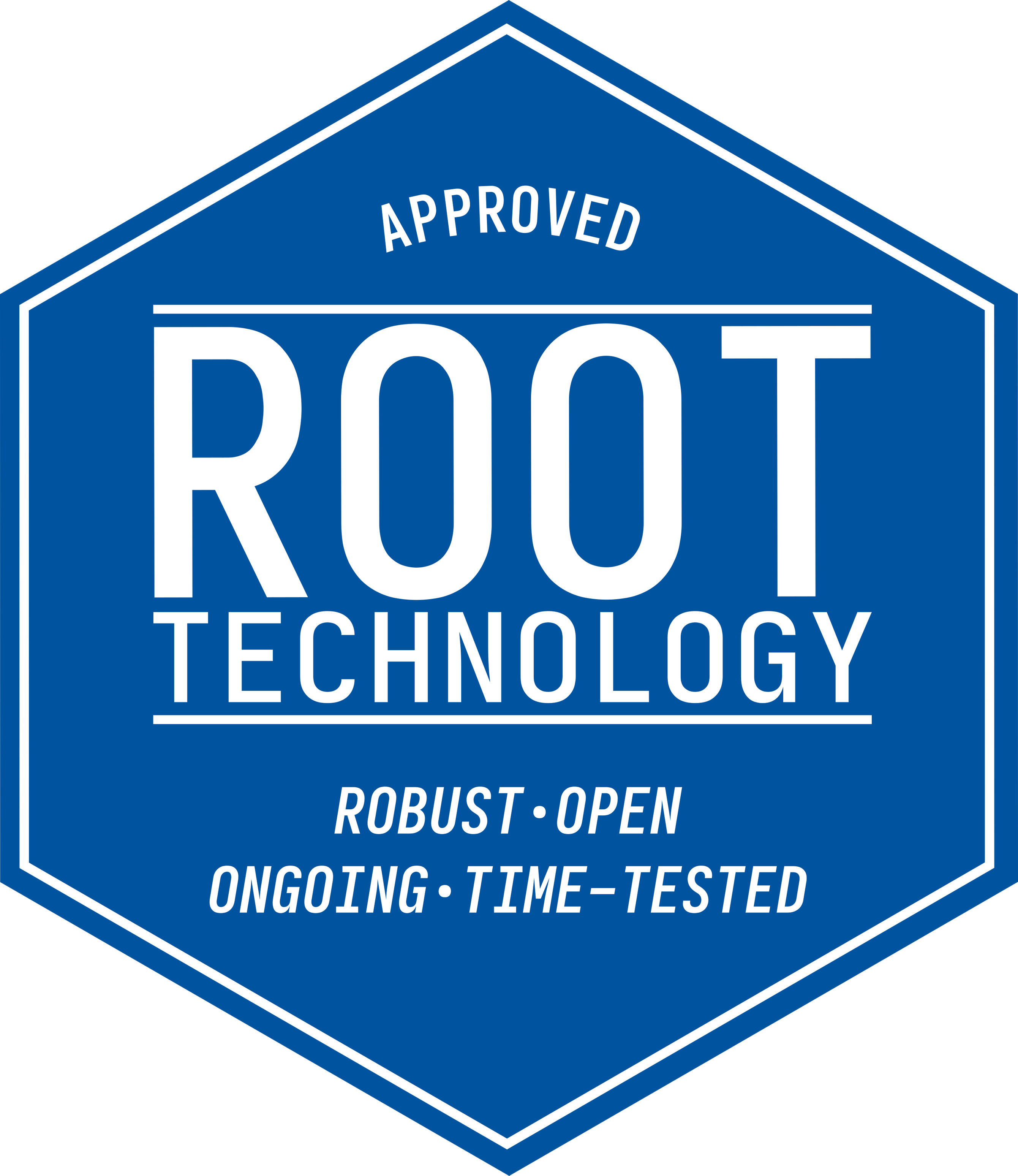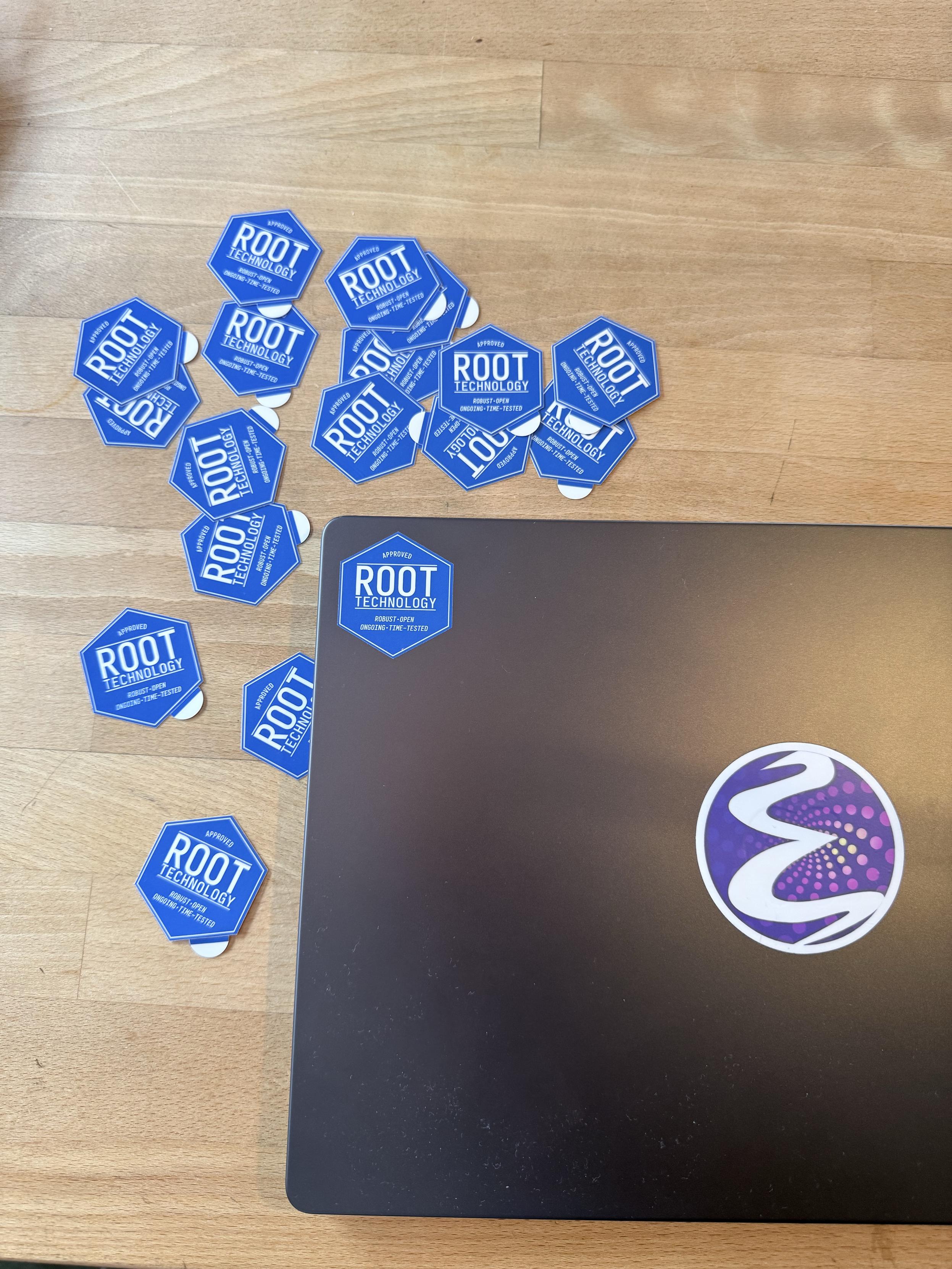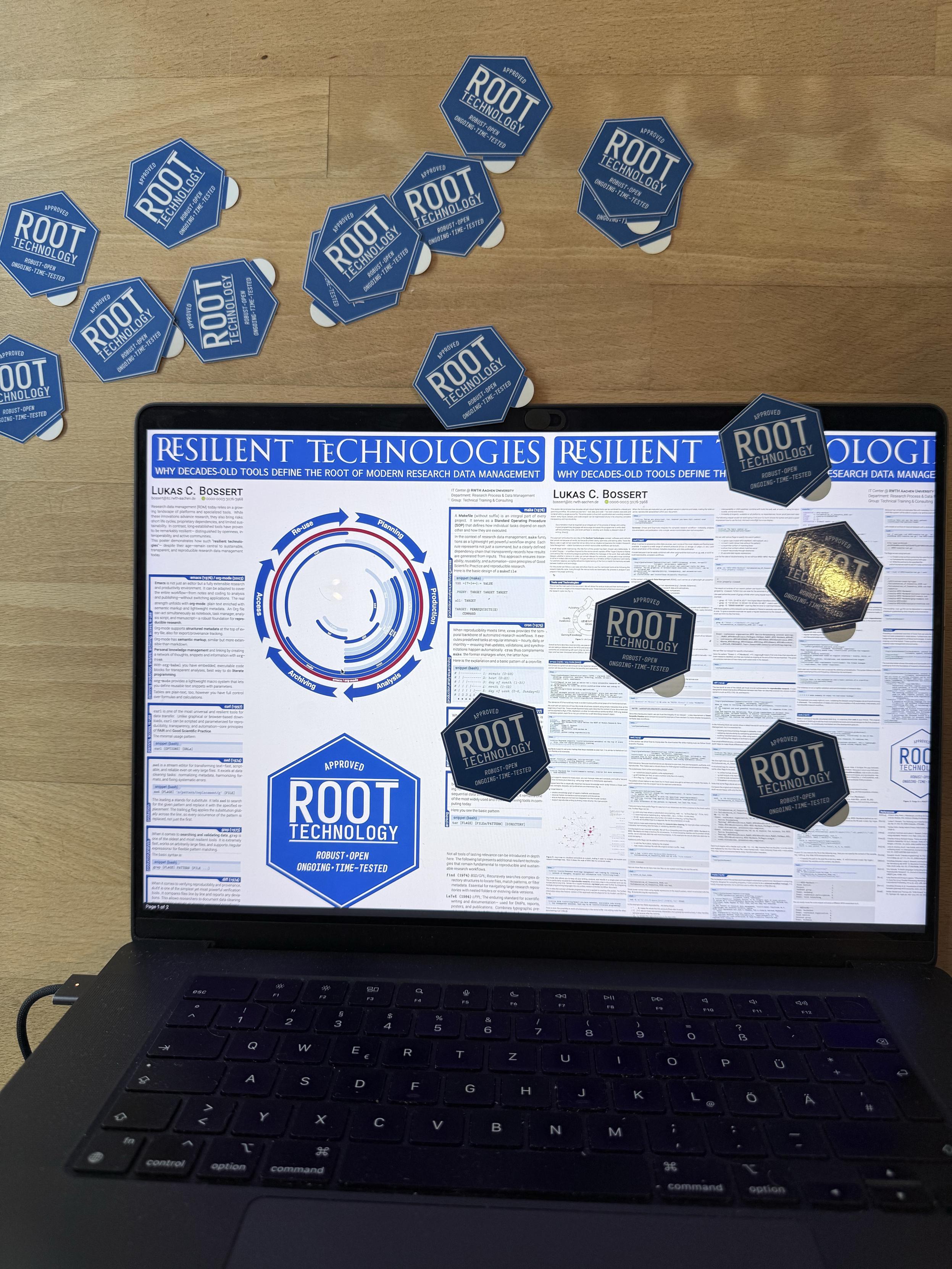Resilient Technologies. Why Decades-Old Tools Define the ROOT of Modern Research Data Management
Research data management (RDM) today is characterized by a multitude of new platforms and specialized software solutions. These innovations are undoubtedly important, but they also involve risks: short life cycles, proprietary dependencies, and limited sustainability. In contrast, there are tools that have existed for decades and have proven to be remarkably resilient. These “resilient technologies” are distinguished by longevity, openness, interoperability, and the support of active communities. Examples include Emacs (established in 1976 as a highly customizable editor), awk (1977) for efficient text and data processing, sed and grep (indispensable in pattern recognition and transformation since the 1970s), as well as perl (1987) as a flexible scripting language for data pipelines. In the field of documentation, LaTeX (1984) stands for sustainable, reproducible, and platform-independent text processing. For the automation of complex workflows, make (1976) has proven its worth, while rsync (1996) remains unrivaled as a robust tool for data backup and transfer to this day. This is complemented by curl (1997), which has enabled stable and universal data transfer over the internet for decades. This three-poster series argues that decades-old, community-maintained tools form the ROOT of sustainable research data management—Robust, Open, Ongoing, Time-tested. The Concept/Meta poster motivates the idea of “resilient technologies,” tracing its lineage from literate programming and the Unix philosophy to contemporary RDM/NFDI practice. It introduces the ROOT badge as a compact signal for tools that are transparent, composable, well-documented, and maintained across years. The Main poster translates the concept into practice by mapping resilient tools (e.g., Emacs/Org-babel, Make, curl/sed/awk/grep/diff, cron, tar/rsync, SQLite, LaTeX, find) onto the research data life cycle (planning, production, analysis, archiving, access, re-use). It highlights simple, inspectable patterns—small steps that chain together into pipelines you can audit, version, and rebuild long after fashions and GUIs change. The Source poster closes the loop by disclosing the full build of the posters themselves: a reproducible, text-first publication that can be re-generated from a single source using the very tools it advocates. Together, the trilogy provides a coherent “why–what–how”: a rationale for resilience, a concrete mapping to RDM tasks, and an executable artifact that embodies the approach. The intended outcome is pragmatic: lower maintenance burden, higher reproducibility, and infrastructures that improve with age.


